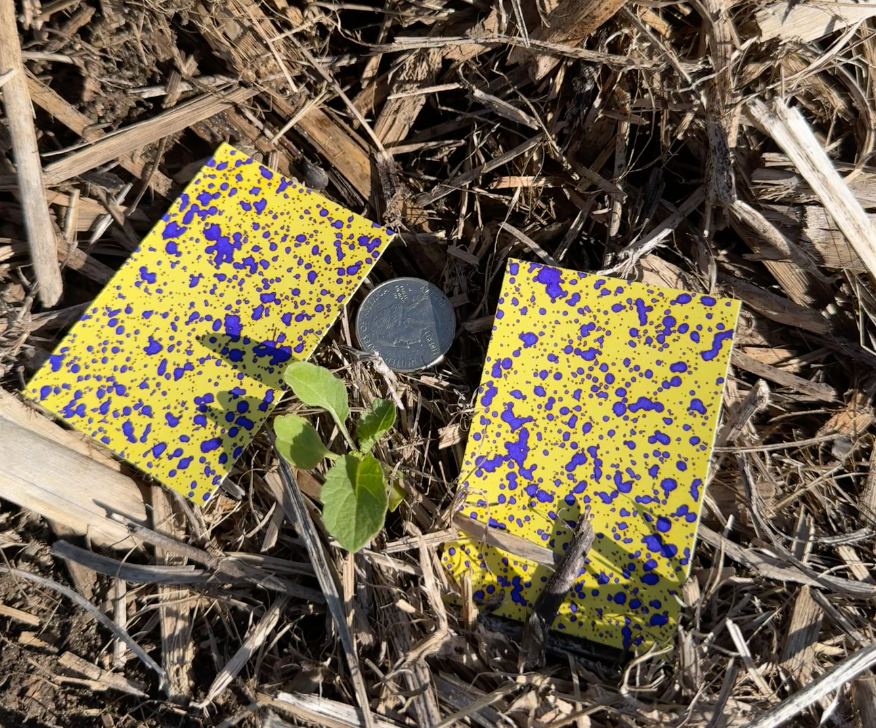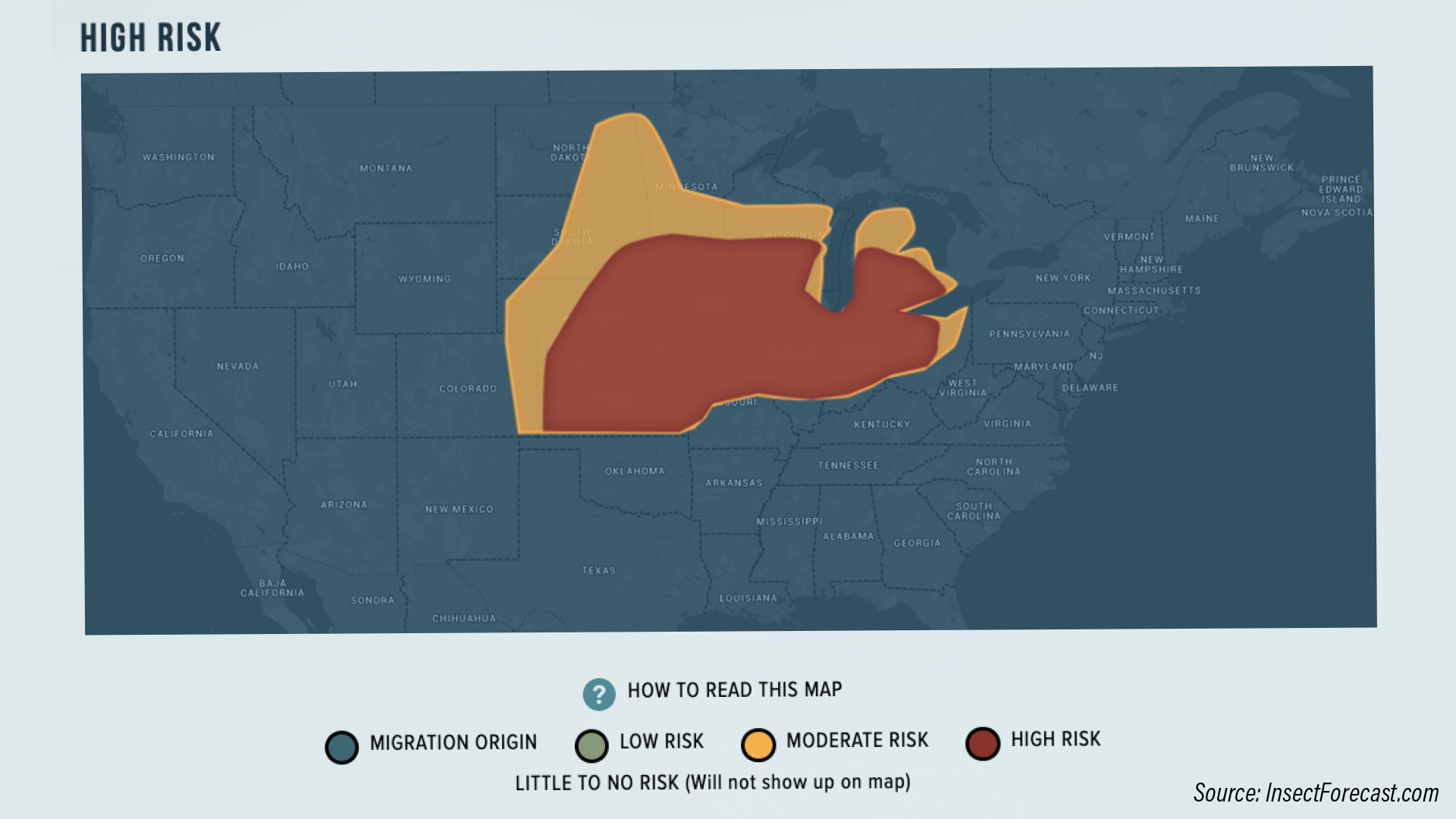On this episode of Conservation Ag Update, brought to you by the 2024 National Strip-Tillage Conference, Eagle, Wis., no-tiller Tyler Troiola uses John Deere See & Spray Premium for the first time, which he says delivered significant herbicide savings on corn but not quite as much on soybeans.
As corn rootworm makes its presence felt in the Corn Belt and beyond, veteran entomologist Ann Marie Journey shares something important for farmers to keep in mind when dealing with the pest this summer.
In the Cover Crop Connection, USDA plant research geneticist Lisa Kissing Kucek studies the ROI of winter peas in cover crop mixes. Later in the episode, Annville, Pa., no-tiller Zach Alger describes how cover crops helped pave the way for a 318-bushel corn yield.
Plus, we catch up with Sentera CTO Eric Taipale for a look at the company’s new Aerial WeedScout technology. And in the Video of the Week, we revisit a groundbreaking field day featuring insights from No-Till Innovators Jim Hoorman, Ray Archuleta and the late Dave Brandt.
This episode of Conservation Ag Update is brought to you by the 2024 National Strip-Tillage Conference.
Build and refine your strip-till system with dozens of new ideas and connections at the 11th annual National Strip-Tillage Conference in Madison, Wis., Aug. 8-9, 2024. Experience an energizing agenda featuring inspiring general session speakers, expert-led Strip-Till Classrooms and collaborative Strip-Till Roundtables. Plus, Certified Crop Adviser credits will be offered.
Just as important is the chance to profit from unlimited hallway networking with the most innovative, forward-thinking minds in strip-till. Come see for yourself why past attendees say they take home an average of $17,083 in ready-to-use ideas!
TRANSCRIPT
Jump to a section or scroll for the full episode...
- Is See & Spray Practical in a No-Till System?
- Billon-Dollar Bug: Building Corn Rootworm Resiliency
- Does It Pay to Add Winter Peas to a Cover Crop Mix?
- Cover Crops Maximize Yield for Pennsylvania No-Tiller
- Ahead of the Curve: Aerial WeedScout
- Video of the Week: A Look Back at ‘Eco Farming’ Field Day
Is See & Spray Practical in a No-Till System?
Welcome to the first episode of July, thanks for being with us. Let’s kick things off in Eagle, Wis., where a longtime no-tiller is putting new technology to the test.
Tyler Troiola used John Deere See & Spray Premium for the first time. The retrofit kit uses 36 cameras and machine learning to selectively target spray weeds.
Troiola used it on corn at 10 inches, 14 inches and 18 inches. When corn was 10 inches tall, he says See & Spray only sprayed about 18% of the field, which adds up to over 80% in herbicide savings. It went down to about 70% savings on 14-inch-tall corn, and 60% savings on 18-inch-tall corn.
Troiola also used See & Spray on soybeans planted in 7.5-inch spacing, 15-inch spacing and 30-inch spacing. The jury’s still out on the ROI, but he says it worked best on 30-inch soybeans, with about 30% herbicide savings.

Before spraying, Troiola placed water sensitive paper next to several weeds to test the accuracy of the system. And as you can see here, as signified by the purple spots on the paper, See & Spray was able to see and spray even the smallest weeds in heavy residue. Overall, Troiola’s encouraged by the results.
“On corn, it kind of worked as advertised. On average, our corn, we sprayed about 20% of the field. Beans, from what I’ve seen, some fields it sprayed 80-85% of the field. Obviously, that’s 10-15% savings. But when you’re paying a subscription fee every acre, are you really saving anything?
“How will it work in residue? We planted into huge rye. I found that as long as the rye was dead, the system seemed to work in it because I think it must distinguish color as well. I was pretty skeptical of how it would work in our heavy residue systems, and it seemed to work.
“Overall, I think it has a fit. That doesn’t mean we’re just going to put the blinders on and just stick with it. It’s going to take a lot of analyzing and running the numbers to make sure it does work. Where we sit right now, in the middle heat of it, I’m happy with what I’ve seen so far.”
Tyler says the biggest savings might be on time — not having to stop and reload the tank mix was a huge benefit. And he says his tank mix for soybeans is more expensive than corn, so even with just a 15% herbicide savings, it might be worth it. Time will tell, when he crunches the numbers. We’ll introduce more cutting-edge sprayer technology later in the program, stay tuned.
Billon-Dollar Bug: Building Corn Rootworm Resiliency
The “Billion Dollar Bug” meanwhile is at it again across much of the Corn Belt. The corn rootworm risk level is high, according to the latest Pest Report from InsectForecast.com

Check out this map, showing areas most at risk, which includes all the big corn growing states. The report attributes this to continued heat unit accumulations being met or exceeded for corn rootworm. Entomologist Ann Marie Journey has studied the pest for a long time and shares something important to keep in mind when fighting it.
“When we approach the rootworm as just a problem that has to be solved, you’re not taking into account the animal’s biology. You’re hitting it just at certain points or with certain methods or controls, and you’re not allowing yourself in effect to have a conversation to gain insight back from the rootworms about what it is that makes them successful in any given place. The more you know about what is making them successful, the more you might be able to do to make their life more complicated.”
Journey will share more corn rootworm insights during a presentation at the National Strip-Tillage Conference. It’s coming up Aug. 8-9 in Madison, Wis. Reserve your spot at StripTillConference.com.
Does It Pay to Add Winter Peas to a Cover Crop Mix?
Mackane Vogel here with this week’s Cover Crop Connection. Winter peas can be a great addition to a cover crop mix for many growers, but the cost of these seeds can be high and the return on investment doesn’t always pay off. USDA plant research geneticist Lisa Kissing Kucek is in Madison, Wis., at the forage research center where she and other researchers have been breeding winter peas for 7 years in a nationwide cover crop breeding network to study spring vigor, winter vigor, biomass and other benefits of various cover crop species.
“So the story with peas is we’ve been quite successful at improving that winter hardiness, but we still can’t promise that a grower in some harsher environments like Minnesota is going to get reliable survival of peas. So, the peas are looking great this year as they do many years. So here is one of our best lines for winter survival and a variety that is nearing release now. These peas though, although we see good survival in this nursery this year, especially for some of our best lines that are winter hardy like this one in front of me and that one down there, that were selected in Minnesota and North Dakota, respectively. We only had 7% of these peas survive in Minnesota this year. So, there is a big contrast with environment and winter conditions, freeze-thaw and snow cover that can influence survival. So, right now we are building a large database in order to really map across the country — what’s the likelihood of survival for this species in different parts of the country. And right now, the northern Great Plains and northern Midwest is still a high risk area to grow peas. And as a really big seed that has a high seeding rate in a cover crop mix, peas are really expensive. So we want to really paint that picture for growers so they can get an accurate estimate of what’s their likelihood of getting money out of putting peas in a mix vs. just losing it to winter.”
Lisa says one way to enhance survival is planting the peas as deep as 2 and a half or 3 inches or pairing winter peas with a grass in a mixture to help create a buffer for those tough winter conditions.
Cover Crops Maximize Yield for Pennsylvania No-Tiller
Annville, Pa., no-tiller Zach Alger is a big believer in the benefits of cover crops.
His 318-bushel corn yield was good enough for first place in the state’s 2023 NCGA Corn Yield Contest. Alger says planting conditions across his farm have improved quite a bit since he started using wheat as a cover crop about 10 years ago.
“I’ve gotten into boating the last couple years. It does kind of bother me — I’ll go down to the Chesapeake Bay and there’s a lot of dead fish down there. You see them and the cornstalks floating right next to it and some stuff that looks suspiciously like manure. I want to keep that stuff in the field.
“I put manure on again this year. I kind of had to cheat a little bit. It was a little bit wetter than I would’ve liked when we put the manure on. There’s some compaction there. I think having the cover crop there, not only does that root mass help protect the soil from wheel traffic, but that cover crop is there growing now, and I think those roots, if I let them go a week or 2, I think it could almost grow some of the compaction out. We’ll see. Maybe it won’t work, but you don’t know until you try.”
Zach wants to use cereal rye eventually, but he says it’s very expensive in his area, so he hasn’t tried it quite yet.
Ahead of the Curve: Aerial WeedScout
There’s new smart spray technology from precision ag startup Sentera that could lower herbicide usage by up to 70%.
It’s called Aerial WeedScout. It uses aerial imaging from a drone and artificial intelligence to detect weeds. Then it creates prescriptions within 24 hours that can be executed through any precision sprayer. Sentera CTO Eric Taipale explains what separates Aerial WeedScout from other precision spraying options on the market.
“We’re fortunate at Sentera, we’ve got a fantastic machine learning, data science group, but we’re also one of the largest producers of sensors. We actually design and build them in the U.S. On more than 80 acres per hour of flight, we’re capturing 1½-millimeter imagery of that field. Every pixel is 1½ millimeter. To see a 6-millimeter weed, you’ve got to have more than 1 pixel of green. This is really phenomenal. We have a direct georeferencing technology that allows us to dramatically increase the rate of coverage where we can go and map a whole field and, on an hour-by-hour basis, we can stay ahead of that sprayer.”
Aerial WeedScout is being used this summer on about 10,000 acres in Illinois, Iowa, Minnesota, North Dakota and South Dakota as part of an Early Access Program. Commercial release is scheduled for 2025.
Video of the Week: A Look Back at ‘Eco Farming’ Field Day
We’re hopping in the DeLorean time machine for our Video of the Week and going way back to 2011 for a star-studded field day in Mercer County, Ohio.
No-Till Innovators Jim Hoorman, Ray Archuleta and the late Dave Brandt, gathered to talk about the concept of ‘ECO Farming,’ which stands for eternal no-till, cover crops and other best management practices.
“I think the ‘ECO farming’ way of doing things is a balanced approach where we can use no-till, cover crops, and still be determined to do a good job. I think it’s going to be the way of the future. Presently, we’re using rye after corn. Then we go to soybeans. After soybeans we go to wheat. From wheat, we go to 5- or 6-way species so we can come back with corn the next year. And with doing that, we’ve been able to reduce our fertilizer inputs by about 65-75% and our chemicals by 50%.”
Dave Brandt’s words live on.
Have an interesting photo or video from your farm? Or a story you’d like us to feature on the broadcast? Send me an email at Nnewman@lesspub.com.
And that will wrap things up this edition of Conservation Ag Update. Until next time, for more stories visit no-illfarmer.com, striptillfarmer.com and covercropstrategies.com. Thanks for stopping by. Have a great day!








